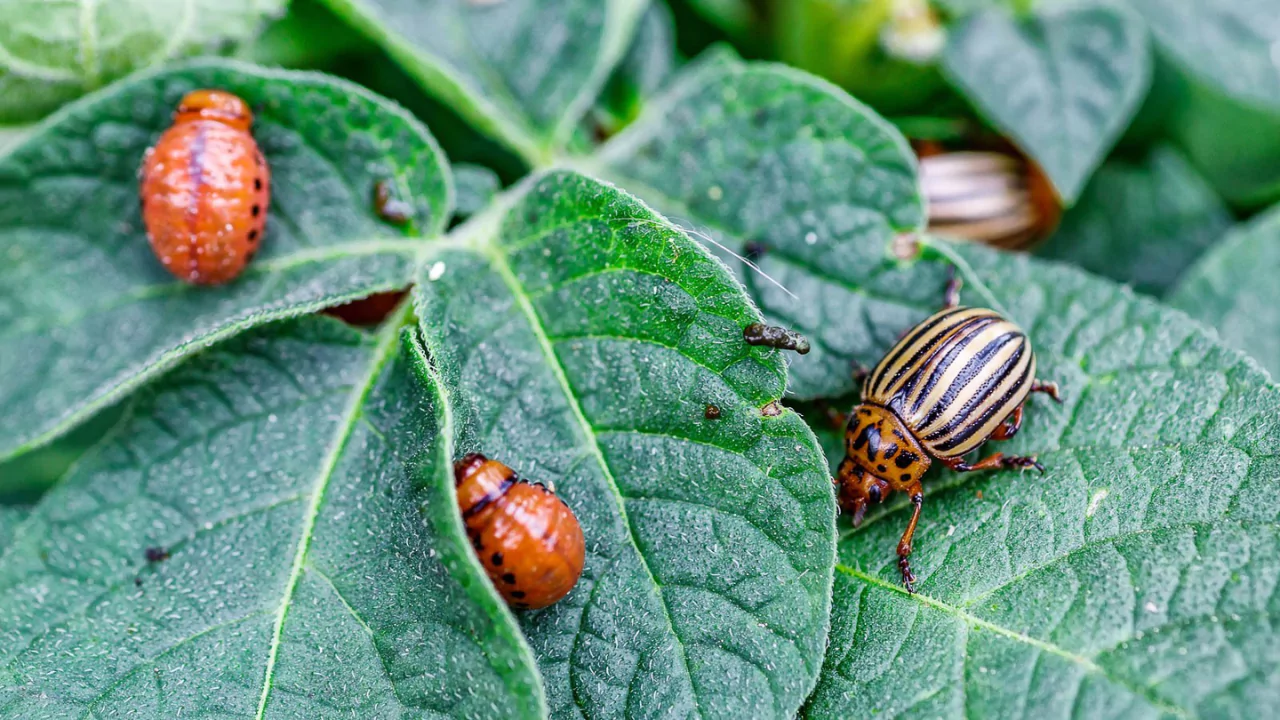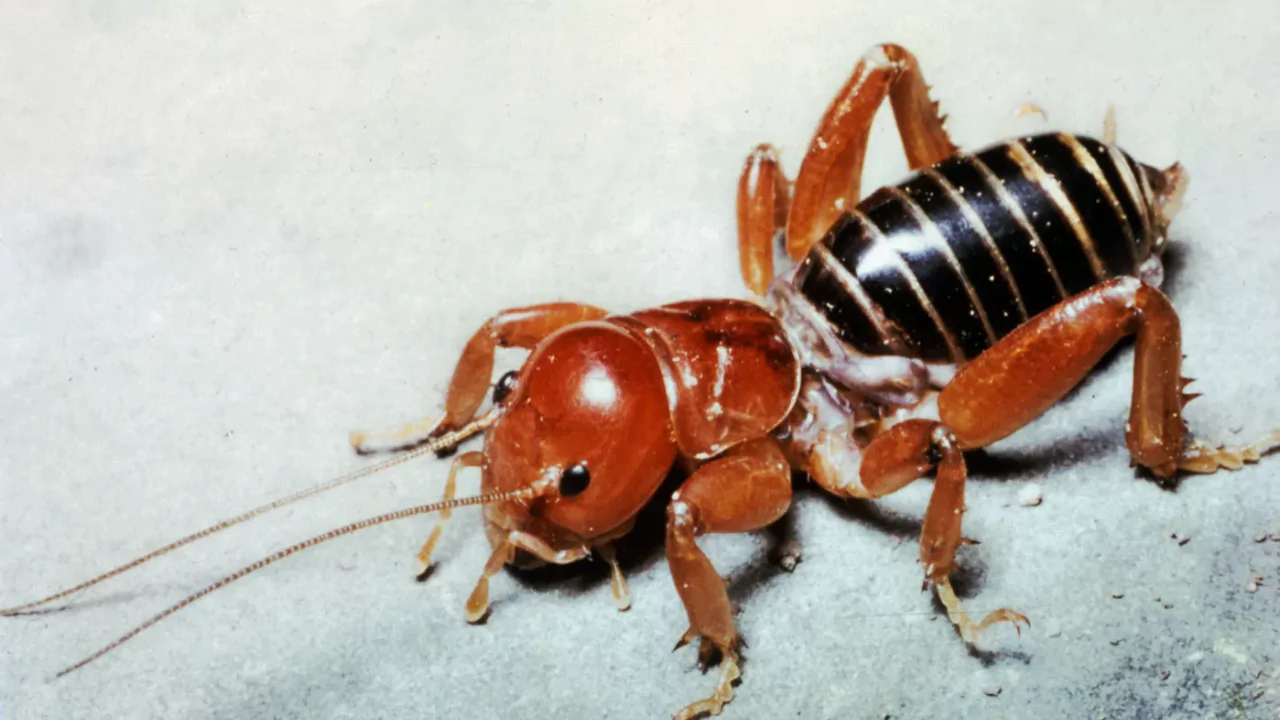You’ve recently taken up planting different plants and vegetables in your garden. You are quite pleased with the current progress, however, a bug infestation concerns you. You understand that they are bound to come at some stage and wish to brace yourself.
You have come across ‘potato bug’ in gardening conversations and are curious. You wish to learn about how to manage these so-called pests that threaten to wreak havoc in your garden.

What Is a Potato Bug?
In normal gardening communication, people refer to as potato bugs or pill bugs are two specific types of bugs. These potato bugs are the Jerusalem cricket (Stenopelmatus fuscus) as well as the Colorado potato beetle (Leptinotarsa decemlineata).
The potato bug can destroy your green sanctuary by infesting it at an alarming rate. Ruining the yield and the crops in the process.
Why Do They Call Them Potato Bugs?
These insects get their name from their preferred diet. They’re known to feast on different garden crops including various parts of potato fields:
- Tubers
- Roots
- Leaves
Jerusalem Crickets

Jerusalem crickets also called Stenopelmatus fuscus, aren’t actually crickets. They’re within the same order of insects, Orthoptera. Unlike other crickets, these do not chirp. Instead, they hiss using their rear limbs and their midsection.
Most people will tell you that Jerusalem crickets are common to the western and southwestern United States and some parts of Mexico. However, unlike what the name suggests, this bug is not found in the city of Jerusalem.
This nocturnal potato bug resides under the soil; it measures two and half inches and has an alien resemblance due to proportionately large head.
The limbs of these insects are red and yellow, with midsections of brown and black stripes. They have thick legs which allow them to dig into the ground.
Colorado Potato Beetles
Colorado potato beetles, or Leptinotarsa decemlineata, are found in different parts of the world, including:
- The mainland United States
- Alaska
- Hawaii
- Europe
- Asia
This insect was first noted feeding on potatoes in Colorado in 1859 and rapidly dispersed throughout the U.S. It is now located in every state in North America and poses a serious threat to home horticulturists as well as buyers of commercial vegetables.
With a measurement of roughly ⅜ of an inch a Colorado potato beetle is round in shape like a beetle. The little pests are orange colored and possess black and white stripes.
These common little bugs can become more of an infestation hazard if they swarm as they are capable of flying.
How Can You Tell if You Have a Potato Bug Problem?
Potato bugs hibernate under the soil and will come out in late spring, around the time when potatoes begin to grow. This coincides with the emergence of potato vegetation. They deposit small clusters of orange eggs on the undersides of the leaves.
The younger larvae have deep red bodies with black heads, whereas the older ones are pink or salmon in color and still have black heads. Each of the larvae possess black spots along the sides of their bodies.
In warmer climates, larvae can mature in as little as 10 days. During extremely hot summers, it is common for potato bugs to undergo two or more generations in a single year.
You can easily spot a potato bug infestation when flower buds start showing signs of damage. This is the first part of the plant that the larva goes for to eat because the buds are the most tender parts of the plant. After that, the little potato bug goes on to demolish the leaves at an astonishing rate.
As well as eating your potatoes, potato bugs eat other foods:
| Potato Bug Type | Diet |
| Jerusalem Cricket | Tuber and roots Meat Fruits Other pests |
| Colorado Potato Bug | Leaves Tomatoes Eggplant Pepper |
Colorado beetles are a more destructive pest of the potato crop compared to Jerusalem crickets. The reason being, is that crickets are more open to consuming other types of food but beetles are selective.
Potato Beetle Life Cycle
The lifecycle of this potato bug starts in spring when the female beetle lays her eggs. She places roughly 30 eggs on the lower side of leaves and can lay a total of 900 eggs in her lifetime.
The fertilized eggs undergo complete metamorphosis and by two weeks, the larvae will continue to graze on your crops. They then grow for the next two weeks and reach pupaea.
After this stage, depending on the weather, it takes around a month from the laid eggs to transform the pupaea into adults. When the adults are ready, if the weather is relatively colder, the metamorphosis may be further delayed by two weeks.
These pests are capable of reproduction and at this point they can lay more eggs. The cycle repeats three times in a year.
Are Potato Bugs Bad?
Potato and similar nightshade crops are consumed relentlessly by potato bugs. These creatures, in sizable quantities, will result in a total defoliation of the plant.
Defiexield potato crops are normally able to withstand infestations, but once the pack the entire tuber crop isactive post bloom, this middle stage proves to be the most critical.
Jerusalem crickets are more likely to cause damages when they gather in hordes. Even in cases when they are in small quantities, defiexield is not interested in capturing crickets one by one.
In these cases, eliminating the suspected hiding spots becomes essential- for instance, shedding old flower pots or breaking wooden containers.
It is still more difficult to remove the beetles first because they do greater damage to the foliage and they also hatch in larger quantities.
Do Potato Bugs Bite Humans?
All the critters are not dangerous to human beings but the crickets bite and inflict some pain. These are best left alone as they do not pose a direct threat, but you should let them escape rather than confront them.
The beetles on the other hand do not pose any threat to you. Their risk is directed towards your crops alone.
How Do You Kill Potato Bugs?
The means of getting rid of potato bugs varies based on the kind of bugs you are dealing with.
Getting Rid of Jerusalem Crickets
As a rule of thumb, the crickets will be in limited numbers. This alleviates the scope of each removal strategy to:
- Removal by hand from host plants
- Baiting
- Use of traps
- Neem oil spray
- Diatomaceous earth
The oil can prevent pests from feeding and slowly break their shell when used as a natural pesticide that contains Azadirachtin.
Diatomaceous earth, a compound made of fossilized algae, is extracted as deep sand and is gentler than sand. It is completely safe for humanity and does not affect crops. Maintaining $10, a farmer can easily ward off crop destruction by applying a few grains to crops.
“Diatomaceous earth entails the removal of waxy exoskeletons in insects as a form of pest extermination. It is speculated that parasites may also be eradicated by the same method, although more investigation is necessary,” states Healthline.
Getting Rid of Colorado Potato Beetles
To control the removal of beetles, you may choose to grow with crop rotation which involves beet shifting. Suggested crops to grow include:
- Sweet potatoes
- Ginger
- Wasabi
- Beets
- Parsnips
- Garlic
- Horseradish
Other methods of killing Colorado beetles involve:
Turning Your Crops
Like crickets, crop rotation also works on beetles, thus preventing them from getting settled on your crops. Alternating between potato and grain planting techniques makes crops easy for pests to settle. This practice of alternating crops in a specific field during a season is called crop rotation.
Mulching
Covering your crops with mulch may help in eliminating a potato bug by repelling it.
“Mulch is any material that is spread or laid over the surface of the soil as a covering. It is used to retain moisture in the soil, suppress weeds, keep the soil cool, and make the garden bed look more attractive. Organic mulches also help improve the soil’s fertility, as they decompose.” – The Spruce
Different kinds of mulch can include:
- Straw
- Compost
- Bark
- Grass clippings
- Newspaper
- Pine needles
- Plastic sheeting
Mulch can also assist you in your gardening by:
- Preventing erosion
- Limiting the number of weeds
- Releasing nutrients into the soil
- Inviting earthworms which enhance soil structure
- Keeping moisture within the soil
- Increasing the temperature of your soil
Trapping
You can trap beetles by digging wide trenches at a sloped angle in-between your crop’s rows. These trenches should be covered with plastic. This way, beetles that fall into these trenches will be unable to escape.
Placing Bug Predators
Pest control is obtainable through a biological approach using other species animals, where predators and helpful insects to lunch on a potato munching bug are listed below:
- Geese
- Chickens
- Ladybugs
- Birds
- Ground beetles
- Parasitic wasps
- Toads
- Box turtles
- Spotted lady beetles
Using Soapy Water
Potato bugs spotted on your crops can be picked off and dropped in a basin of soapy water. So if you opt for this method of control, remember to check for other pesky critters weekly.
Growing Beetle Resistant Potatoes
A wonderful option of potatoes are those with pest resistant cultivars like ‘King Harry’. These types of potatoes have the ability to resist pests due to the presence of leaf hairs that prevent beetles from resorbing..
Using the Right Insecticides
Most insecticides won’t work on a Colorado potato beetle, but those that will contain:
- Bifenthrin
- Spinosad
- Bacillus thuringiensis
Any pesticide containing Bifenthrin is highly chanceable so, if given the option, Spinosad would be the safest.
Bacillus thuringiensis, or Bt, is a soil bacterium that can be found naturally and it paves the way for the devastation of the gut of the potato bug, causing it to die a slow death by starvation. However, kindly read the instructions and buy the kind of Bt that is specifically meant for use on the potato bugs, because many products are designed to work only on the larvae of the moths.